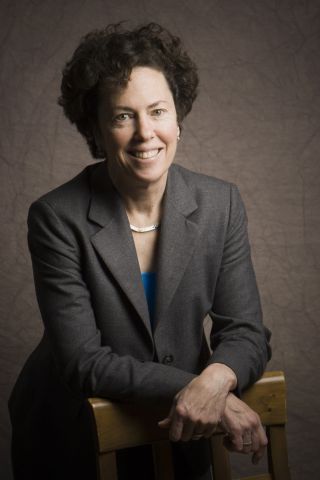Relationships
Stories Mediators Tell
The mystery of mediation is cleared through story telling in a new book
Posted September 17, 2012
As many of my readers know, aside of my work in nonverbal communication, I am also a professional mediator. Enjoy the following article in which I share a recent conversation I had with expert mediator and author, Lela Love. Consider while reading it the many nonverbal cues and elements involved when one is telling a story. Also consider checking out her book too!
Mediation is often promoted as an alternative to the win/lose process of litigation. One of the trademarks and selling points of mediation is confidentiality. Confidentiality has many benefits, but it also creates a cloud of mystery around mediation, leaving potential clients wondering what exactly goes on in the process.
Clearing away this cloud and giving a clear view and understanding of what really goes on during mediation sessions is the new book, “Stories Mediators Tell,” (American Bar Association/Section of Dispute Resolution, 2012) edited by Eric R. Galton and Lela P. Love. The title alone removes any mystery around what to expect from what is written on its pages. The book offers insight from seasoned and expert mediators, in the form of stories, each of whom have handled hundreds (some of them thousands) of cases.
The chapters bring the reader into mediation sessions whose sources of the disputes are as wide-ranging as the vast experiences of each of the mediators--from the workplace setting, family, personal relationships, government, business partners, wrongful death, automobile accidents, and medical malpractice.
The stories are based on mediations that are not always success stories but sometimes mediations that were memorable to the authors for another reason—for example, because mistakes were made. This gives the reader the feeling of having a backstage pass to not only what goes on during a mediation but also access to what was going on in the mind of each of these expert mediators who provide their “second thoughts” in addition to telling a story.

Lela Love is also the Director of the Kukin Program for Conflict Resolution at Benjamin N. Cardozo School of Law
The book, where Galton and Love are both the editors as well as contributors to chapters, is neatly designed as 24 mediators tell a total of 31 stories from mediation sessions and then provide a reflection.
I recently had a conversation with Love where we discussed the book, including why this format was chosen. When asked about the format, she quickly pointed out that the purpose was not meant to make mediation look good, but rather offer a window into what mediation is.
Love said, “The book is not intended to tell inspiring stories only, but also illuminating stories that include tragic and funny incidents and missteps mediators have made.”
When pressed as to why create a book telling stories compared to a textbook, Love herself lit up and responded, “Stories are magical, they have been used for centuries to offer meaning, explain reality, build community, and educate … they have long been used as a very valuable tool for mediation trainings.”
With a bright smile remaining on her face, she adds, with a seemingly comical yet clear serious undertone, “No one reads textbooks on mediation.” We both then share in laughter, as we both know the important role mediation textbooks have in mediation education, yet both fully understand the equally impactful use of story-telling in educating mediators.
The difference with this particular format, and specifically this particular book, is through storytelling an interactive element is added that a textbook can never accomplish. As the reader, you are not spectator; you cannot help but put yourself in the stories you are reading in each chapter. While I read the book and turned each page, not only was I asking myself what would happen next, I was also reflecting on what I would do if placed in the scenario.
These moments of reflection are rewarded with a conclusion and reflection from the expert mediators and writers. The reader is left feeling as if he or she is present during the whole process and then gets a private self-reflective debriefing session with the mediator.
So who are these mediators? The mediators chosen to share their stories are easily recognizable names in the field. Due to many years of contributing to the ADR community, through various means including mediating, educating, and writing, Galton and Love personally know each of the contributors, many of whom belong to the highly esteemed International Academy of Mediators.
The book has already been successful with a core audience. When asked pointedly who is the audience, Love responded with three target audiences, “Of course it is for: 1. mediators and lawyer-mediators, and 2. lawyers who represent clients in mediation; but it is also for 3. a general audience—the public, people with disputes.”
Love lit up once again, although those who know her will agree there is always some degree of illumination that she constantly possesses. She said: “I would love the general public to read this book! They will find there is another way to handle conflicts. They will discover mediation’s rich potential.” She went on: “Of course, this goes for lawyers too. Many still do not understand there is another way to handle conflicts!”
The general audience already missed out on the first printing of the book, which was a sold-out success much larger than Galton or Love could have anticipated. “We planned to launch the book at the American Bar Association’s Dispute Resolution Section’s annual conference, and all books were sold by the second day of the conference. Our plan to have each of the contributing authors sit at tables to sign the books and engage the attendees during an interactive session had to be cancelled.”
As the conversation continued between us, Love shared comments and reflections from the two chapters she wrote. One included a messy litigation between a town municipality 40 minutes outside New York City and a group of Salvadoran immigrants. Issues included immigration, town ordinances, civil rights, access to services, and, as any mediator will be familiar with, communication.
Having already read the chapter, I will spare the reader and not spoil the ending but rather I will simply add the value Love previously mentioned as the intention of the book is clearly present in this chapter. You gain access and insight that is not available otherwise. From the perspective of each of the intended three audiences, the chapter and book leaves the reader who is the mediator an opportunity to reflect on their own practice while being transported into a real mediation session; for the lawyer who is a representative in mediation sessions, you have the insiders view removing the mysterious cloud of what mediation is or is not; and finally for the general audience reader, you see through a variety of real stories, mediation really can make a difference.
The general public, of course, would provide a lucrative market. I mention lucrative in pure jest as Love and Galton are donating all proceeds from the book back to ABA Section on Dispute Resolution. Love pointed out simply, “It seemed like the right thing to do.”
The book is available now from the ABA website where a free chapter can be viewed [HERE].




